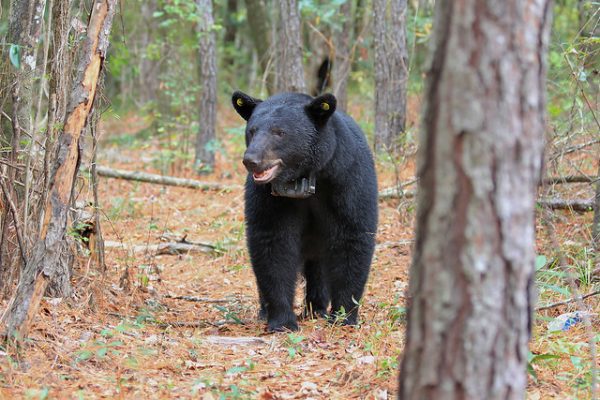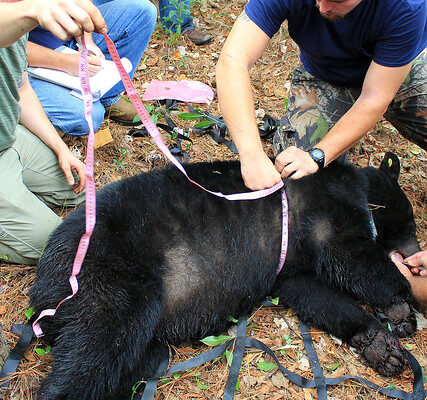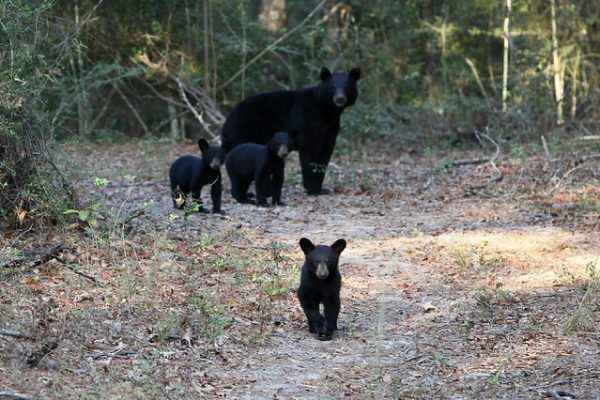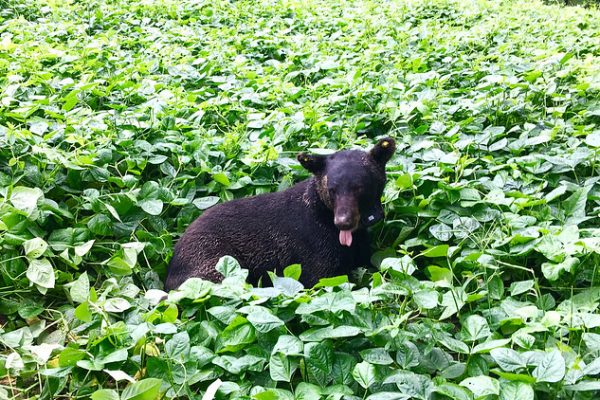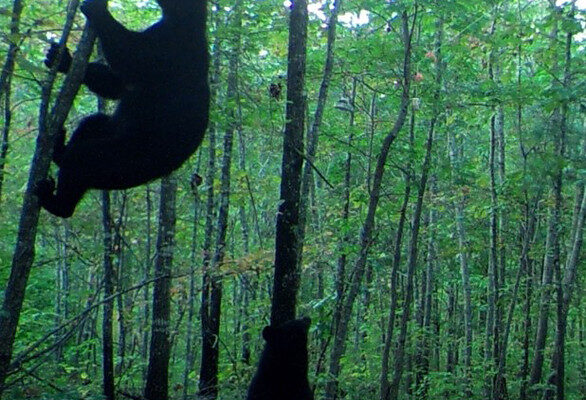An Auburn University study on the black bear population in Alabama shows a growing number of bears in northeast Alabama and a distinct genetic group in southwest Alabama.
The state has two areas with bear populations: one with an estimated 30 bears centered around Little River Canyon near Fort Payne and another with an estimated 85 bears in Mobile and Washington counties north of Mobile. The latter number could be as high as 165, though.
Professor Todd Steury of the School of Forestry and Wildlife Sciences and graduate students Christopher Seals and John Draper conducted the multiyear study and recently published the results in the Nov. 8 edition of the scientific journal, PLOS One. Their article, “Genetic health and population monitoring of two small black bear populations in Alabama, with a regional perspective of genetic diversity and exchange,” is online.
The researchers collected DNA samples from hair left on more than 300 hair snares placed in bear habitats; finding and collecting bear scat using Auburn’s EcoDogs program; using game cameras; and tracking bears with radio collars.
“We got over 1,000 DNA samples,” Steury said. “Several groups around the state helped us collect data.”
Munford High School students helped gather information in Talladega National Forest; the National Park Service assisted in Little River Canyon National Preserve; and the Birmingham Zoo helped with the capture of bears in north Alabama. The study was funded primarily by the State Wildlife Grants program from the Alabama Department of Conservation and Natural Resources, which also helped with fieldwork.
The north Alabama black bear population, which originally migrated from north Georgia, has more than doubled in the past four years. “One interesting aspect we observed is that mother bears in north Alabama often have three or four cubs in a litter,” he said. “Normally a mother bear has only two cubs.”
The bears north of Mobile seem to be their own distinct group without any genetic connection to other bear populations. “We found high inbreeding in those bears,” Steury said. “They have the lowest genetic diversity of any comparison population in Southeast.”
Previous studies conducted in lab settings have shown low genetic diversity can lead to lower survival rates and lower reproduction rates, according to Draper. However, he says those lab results are very difficult to prove in a wild population.
“We look at low genetic diversity as a proxy of likely harmful changes at the genetic level,” Draper said. “Long-term studies are needed to determine the effect on the population.”
Steury says the Mobile bear population’s growth rate is unknown at this time and that the population is continuous with bears in eastern Mississippi.
The research team put radio collars on a total of 20 bears in the two populations and received location information via the internet every hour for a year. The location data was superimposed over Google Earth map images so the locations of individual bears could be mapped. He also used a phone app that would let him monitor the locations and even remotely remove the collar if it got too tight or began rubbing the bear.
“Male bears roam widely,” Steury said. “At two years old, they leave their mother and find a new place to live. Females settle close to the mother bear and expand their range slowly, thus the area occupied by the breeding population is slow to expand. A lot of females don’t cross roads or powerline right-of-ways. Males will cross them as well as rivers.”
He says bears in the South are active in the winter, too, because they don’t really hibernate, but will take what could be considered long naps at times. They will build nests on the ground that resemble a bird’s nest.
The researchers also aged the 20 collared bears by pulling a tiny back tooth, finding an average age of 6 years old and the oldest one being 12 years old. Bears generally live an estimated 18-20 years in the wild and can live 20-30 years in captivity.
“The biggest one we trapped and collared weighed 318 pounds,” he said. “Most were around 150 to 250 pounds.”
While technically a game species, there is no hunting season for bears in Alabama because the population numbers are too low. It is illegal to kill a bear in the state.
“If you encounter a black bear, you should stay calm, make yourself big and loud, and back away slowly,” Steury said. “A black bear will almost always run away, but, if you are attacked, you should fight back. That differs from a grizzly bear, which, in that case, you should play dead if attacked.”
He also recommends steps to discourage bears from roaming into populated areas, such as not feeding bears and not leaving trash and pet food outside. If a person sees a bear, he or she should contact a local conservation officer or the Alabama Department of Conservation and Natural Resources.
Originally published November 8th, 2017.
(Written by Charles Martin)

